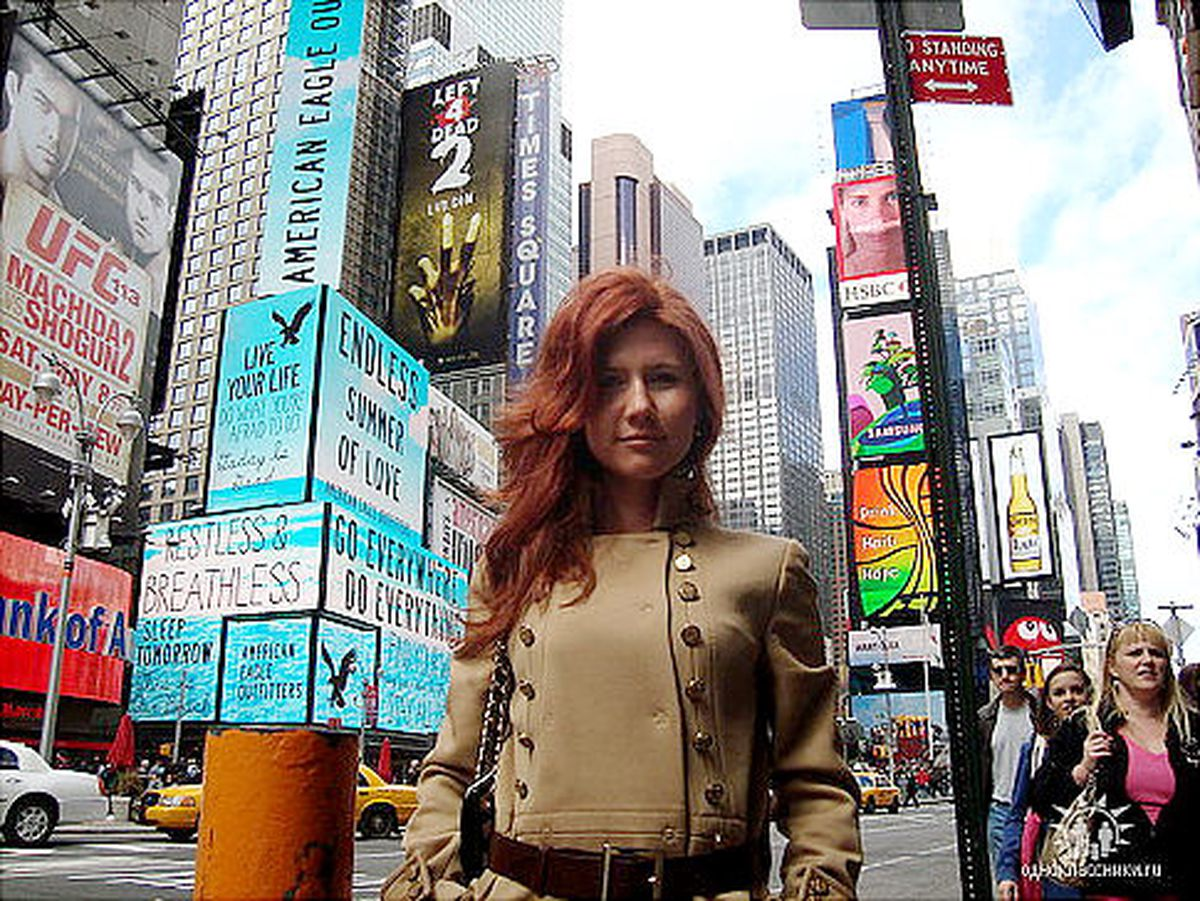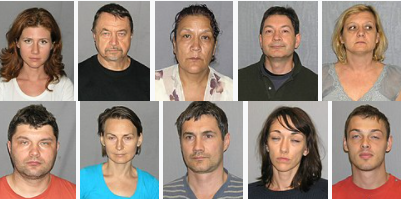
Anna Chapman was a Russian intelligence agent who was arrested on charges of working as a spy for the Moscow government in June 2010 while living in New York.
Chapman pleaded guilty and was extradited to Russia in July 2010, in the largest spy swap deal since 1986. Her good looks put Chapman in the media spotlight, and upon her return to Russia she posed for a men’s magazine and appeared on television shows.
In this article, we’ll explore why the media calls Anna Chapman a “hacker,” and since being a hacker is a term that only others can recognize, we’ve delved deeper.
Anna Chapman (maiden name Anna Vasilyevna Kushchenko (Russian: А́нна Васи́льевна Кущенко) was born in Volgograd on February 23, 1982. It is a city in Russia with about one million inhabitants.
Her father was a senior KGB official employed at the Soviet Embassy in Nairobi, Kenya. The family home is located in the southwestern Ramenki district, once an elite district for KGB officials, mid-ranking diplomats, and army officers. According to Komsomolskaya Pravda, Kushchenko’s father held a senior position in the ministry known by its Russian acronym MID (Foreign Affairs). According to her ex-husband, Anna earned a master’s degree in economics with honors from Moscow University. According to other sources, she graduated from Peoples’ Friendship University of Russia.
Anna Kushchenko met Alex Chapman at a rave party in London’s Docklands in 2001. They married shortly thereafter in Moscow, and she obtained British citizenship and a passport, in addition to her native Russian one. In 2003 or 2004, Anna Chapman moved to London where she worked at NetJets, Barclays, and presumably several other companies for short periods.
Anna and Alex Chapman divorced in 2006. In March 2018, it was reported that Alex Chapman had died in May 2015, at the age of 36, of a drug overdose.
On July 5, 2010, it was reported that Chapman may have been recruited to become an agent while in the UK, citing Oleg Gordievsky and Alex Chapman as sources.
In 2009, Anna Chapman moved to New York, settling at 20 Exchange Place, a block from Wall Street in Manhattan. Her LinkedIn profile identifies her as the CEO of PropertyFinder LLC, a website that sells real estate internationally.

Her husband, Alex, said Anna told him the company was constantly in debt for the first two years. But suddenly, in 2009, it had 50 employees and was becoming a successful business.
Chapman posted photos of herself on the social networking website Odnoklassniki (“Classmates”) in Russia, where she said:
“Russia, Moscow. My favorite place on earth, my native capital!”
He also posted photos and profiles on social networking sites such as Facebook and LinkedIn.
Anna Chapman reportedly had an affair with Michel Bittan, an Israeli-Moroccan restaurant owner, while living in New York. During that time, she allegedly attempted to purchase ecstasy pills. She later described her time in the United States with the Charles Dickens quote, “It was the best of times, it was the worst of times.”
In June 2010, the FBI publicized the arrest of ten individuals who had worked as covert operatives for the Russian government under “unofficial” cover. While the nature of the sensitive information passed to their Russian handlers remains unclear to the public (as is their ability to access classified or sensitive government information), what is known are the communication methods used by the spies and their associates, as well as the mistakes the group made that blew their cover and their operation.

the ten members of the “illegal program”
Commentators criticized the apparent carelessness of the Russian spy group, dubbed the ” Illegal Program ,” and the lack of precautions taken to stay under the FBI’s radar. ABC News ran a story quoting former KGB members calling the spymasters “ridiculous amateurs,” and indeed, they were not entirely wrong.
The fact is that US authorities only uncovered the spy network following a tip from a Russian insider. If the traitor (named Alexander Poteyev ) hadn’t alerted the FBI to the spies’ activities, they would likely still be active today.
However, what interests us is the technical point of view of what the Chapman group was doing, and specifically to understand:

Criminal complaints subsequently filed in several federal district courts allege that the Russian network that Chapman was part of fed information back to the SVR ( Foreign Intelligence Service of the Russian Federation) via hidden messages within:
The latter method was carried out by agents, exchanging identical bags as they passed each other in the stairwell of a train station.
The messages and materials exchanged were transmitted to the most unexpected places, such as Grand Central Terminal and Central Park, while the FBI read their emails, deciphered their information, read the encoded texts embedded in images posted online, intercepted their cell phones, and filmed the passing of bags of money and invisible ink messages from one agent to another.
Many former agents have publicly stated that some of the FBI’s observed errors were downright humiliating. In perhaps the most famous example, Chapman had registered her cell phone using a fictitious name and address (99 Fake Street), but the FBI recovered the receipt that Chapman had thrown away in a public trash can.

Other members like Kutsik and Pereverzeva received specially encoded radio transmissions from their Seattle high-rise apartment, and the FBI secretly entered their home where they found random numbers used to decode the “radiograms.”
Another member of the group, Semenko, was first spotted by the FBI on June 5 when he used a computer in a restaurant to send encrypted messages allegedly to a car parked for 20 minutes next to his restaurant with Russian diplomatic license plates, driven by a Russian official known to have wired money to other Russian agents in 2004.
In its summary of Russian spy communication techniques, Wikipedia states:
Russian agents used private Wi-Fi networks, flash memory sticks, and text messages hidden in graphic images to exchange information. Custom steganographic software developed in Moscow was used, in which hidden messages were inserted into harmless files. This program was launched using the Control-Alt-E keys and entering a 27-character password, which the FBI found transcribed. Encoded bursts of data from a shortwave radio transmitter were also used. Invisible inks and the exchange of bags in public places were also used.
Chapman used her laptop at a New York cafe on 47th Street in January 2010 and electronically transferred data to a Russian official who was passing by. Two months later, Chapman used a private Wi-Fi network at a store on Greenwich Street in New York to communicate with the same Russian official, who was nearby. She also used a range extender for her laptop.
Officials said Chapman worked with a network of other spies until an undercover FBI agent attempted to lure her into a trap in a Manhattan bar. The FBI agent offered Chapman a fake passport, with instructions to forward it to another spy.
He asked, “Are you ready for this step?” and Chapman replied, “Of course.”
But, after making a series of phone calls to her father Vasily Kushchenko in Moscow, Chapman followed his advice and handed over her passport to a local police station and was arrested shortly thereafter.

After Anna was arrested in New York in June 2010 on espionage charges, her husband hired publicist Max Clifford and sold his story to the Daily Telegraph. Chapman pleaded guilty to conspiracy to act as an agent of a foreign government without informing the U.S. Attorney General.
After being formally charged, Chapman and nine other detainees became part of a spy swap deal between the United States and Russia, the largest of its kind since 1986. The ten Russian agents returned to Russia via a chartered jet that landed at Vienna International Airport in Austria, where the exchange took place on the morning of July 8, 2010. The Russian jet returned to Moscow’s Domodedovo Airport, where, after landing, the ten spies were kept away from the local and international press.
According to a statement from her American lawyer, Robert Baum, Chapman had wanted to move to the United Kingdom because she held a British passport. The Home Office exercised special powers through the British Home Secretary to revoke Chapman’s British citizenship and prevent her from returning to the United Kingdom.
Surely, reading all this in hindsight, Chapman, so much lauded by the press as a “hacker,” was little of a “hacker,” other than a person who knew how to use technology for espionage and knew how to follow orders.

The name “Anna Chapman” was highly misleading in a foreign country, given her strong Russian accent. Many who met her would have found it strange for a Russian woman to have such a surname. And even if she had explained that it was her ex-husband’s surname, it would only have led to further scrutiny, given that she was divorced and childless.
One might suspect that her choice not to return to her maiden name meant she was trying to hide her former Russian identity. Other aliases in the spy group included Donald Heathfield, Tracey Ann Foley, Richard Murphy, Cynthia Murphy, and Patricia Mills. If an American had immigrated to Russia and identified himself as Alexei Yaroslav Kozlov, wouldn’t that have rightly aroused suspicion?
Encrypted wireless networks raise red flags. While it’s difficult or impossible to obtain data transferred over encrypted wireless networks in transit, the very presence of such networks is highly suspicious. A better way to transfer secret files is to do it so covertly that the transfer itself would be very difficult to detect. Nearly every laptop user in airports and coffee shops will connect to a wireless access point to gain internet access. If there’s an encrypted wireless network between two users (possibly not even sitting together), there’s definitely something fishy going on.
Follow us on Google News to receive daily updates on cybersecurity. Contact us if you would like to report news, insights or content for publication.
